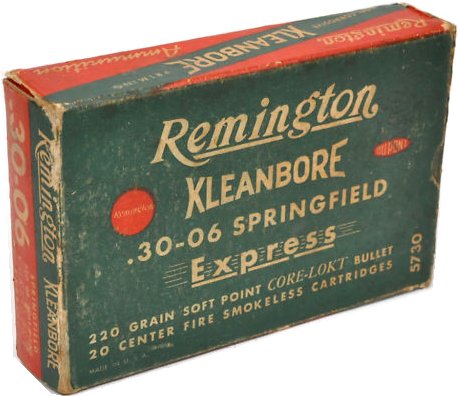With modern firearms the term "grains" refers to weight. The term itself is a throwback to the black powder era. On a box of ammunition cartridges the term "grains" describes the weight (mass) of the bullet. In the most simplified terms, lighter bullets (lower grains number) are accurate at short to medium range while heavy bullets (higher grains number) are better at retaining energy at longer distances.
If you purchase a box of a .30-06 rifle cartridges you will note that the load is marked on the box described by grains.
The box of cartridges in the illustration above from the 1950's describes a 220 grain soft point bullet. This refers to the weight of the bullet and not how much gunpowder is in the cartridge case. The original M1906 .30-06 cartridge consisted of a 150 grain jacketed bullet. After WWI the weight of the bullet was increased to 173 grain for military use. Contemporary .30-06 bullet weights range from 110 to 220 grains.
When speaking in terms of gun powder, the amount of powder, also expressed in grains, has a lot to do with the type of powder used. There's a variety of modern smokeless powder types with various burn rates for various application types. Faster burning powder achieves high velocities with less powder while with slower burning powder the charge, or powder load in grains, may be increased. It is generally very dangerous to load a cartridge case to full capacity with any modern smokeless powder, especially the faster burning types.
